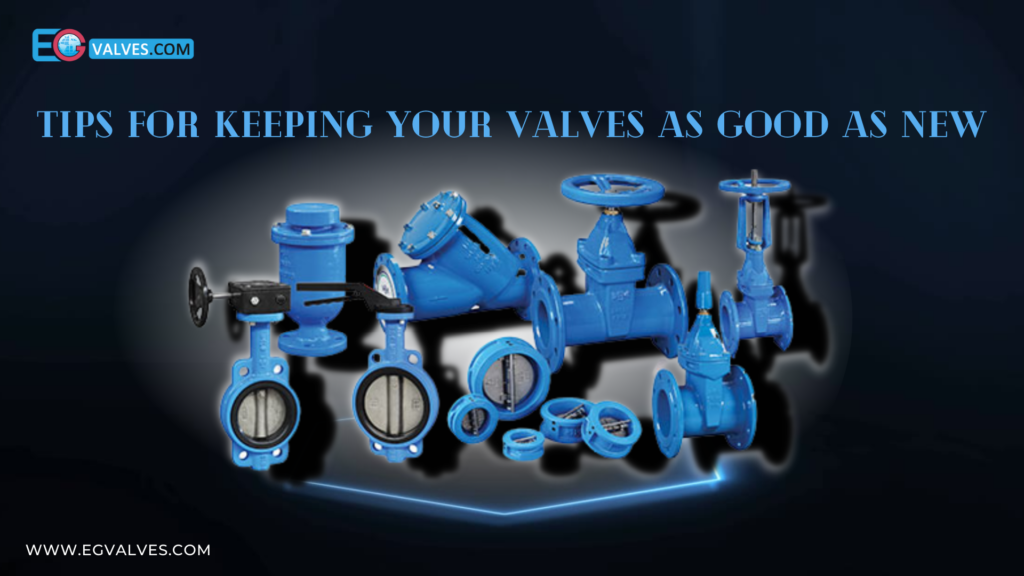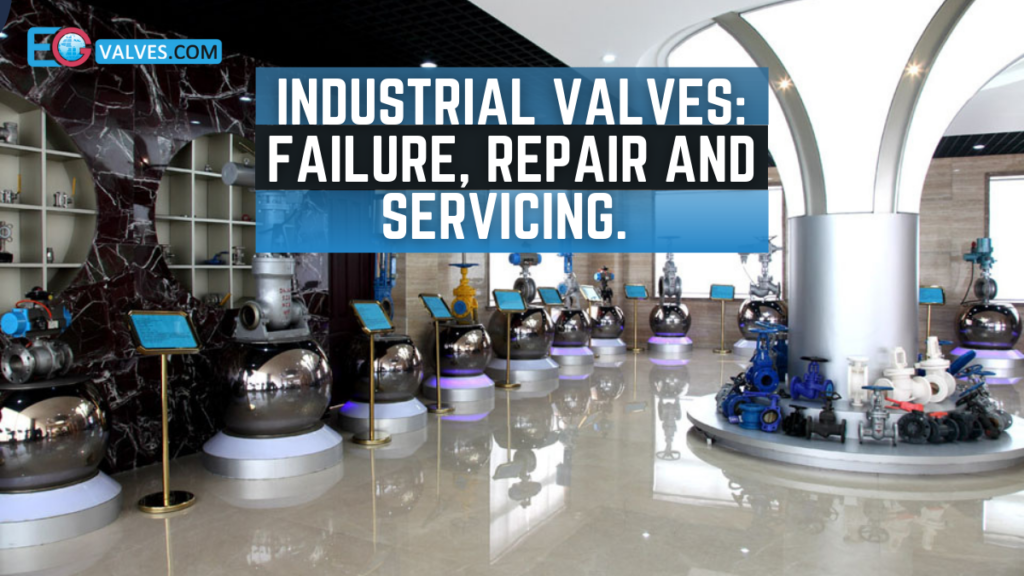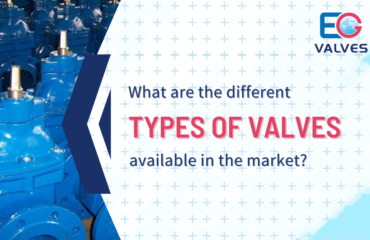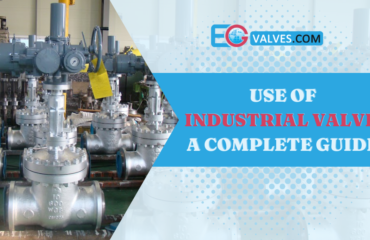Industrial valves aren’t built to endure a lifetime. They’re also not cheap. After the first three to five years of use, repairs are needed. Industrial Valve Failure can, however, be avoided with better awareness.
Factors that affect the life of a Industrial Valve
Seal quality, operating frequency, and environmental conditions all affect valve longevity.
If the seal is working properly, the Valve is working properly as well. Finding the right seal ensures higher performance and long operational life.
Other aspects to consider are the pressure, the temperature, and the media type. It is recommended that valves be maintained every three months if used continuously.
Duration of Repairs (Things to check)
● Internal Leaks: An internal leak is unavoidable because the Valve cannot be completely closed. Each type of Industrial Valve has a maximum leakage allowed by international regulations. When the leakage exceeds the acceptable limit, it’s a sure sign that the Valve needs to be repaired.
● External Leaks: When external leakage occurs, several causes might come to notice. The foremost being Improper maintenance and ignorance, as seen in several cases. Another possibility is that Valve and the media materials are different. Elevated temperatures can also cause external leakage.
● Noisy Valve: Noise created by valves is referred to as “water hammer” in industrial contexts. This is a sign that the Valve needs to be repaired or replaced. This noise is caused by the disc slamming into the valve seat.
● Standstill: When a valve is no longer functioning, it is obvious that it has to be retrieved or fixed. Repairing some valves is possible, while some have to be completely changed.
Why does Industrial Valve Failure Occurs: Facts and Solutions
Improper Size: Ill-fitting valves can result from a faulty valve sizing calculation. The size of the Valve has a significant impact on the amount of media that can flow through it. A bigger Valve can lead to pressure drops, whereas a smaller one can form congestion. If calculating manually is too time-consuming, an online calculator will suffice. Different versions can be found on the web. There are various equations for liquids and gases according to chemical composition. This would make it much easier to find a suitable Valve. The KV value in the product description would also be a good point of reference. Consider the flow rate and the pressure drop range while making your selection.
Improper Material Selection: The material of each component should be compatible with the other components to function properly. The industrial valve is more susceptible to wear and tear due to incompatibility. You may learn more about the valve seat and body material from the product description. As for the medium to be used, these should adhere to the industry norms. You should also check for valve degradation if you feel that material was improperly used. It’s expensive to replace the Valve. Use a material that can survive the harsh conditions of the fluid in question.
Possible Damage To Elastomers: The use of elastomers is prevalent in gaskets, seats and O-Rings etc. They are utilized in sealing applications due to their elastic nature. This elastomer covering prevents the valve body from touching the media. Examples Include Teflon and Aflas. Most of the time, the media’s harsh nature becomes the cause of elastomer degradation.
This natural flow is what wears off the rubber. It is imperative to read about different elastomers that could work well with the media in question. Check the description on the Valve before buying, and if the right elastomer is not compatible, it’s better to find a different sealing component. Inquire into the media stream, and If you find the damage, It would be appropriate to order a replacement.
Stem Wear and Tear: The foremost reasons for stem’s wear and tear are little products like gland bolts and valve packing. Additionally, the frequent movement of the valve disc and contact with the corrosive medium add to the stem degradation. In the case of packing, wear is caused by a lack of flexibility that constricts the sealing space. This is particularly true when inelastic packing material is coupled with gland bolts.
The answer for the smaller valves is to replace them, and besides, they are widely available. Replacement of bigger valves, on the other hand, is not economical. The optimal approach is updating it. Before inspecting the stem, perform a visual inspection of the minor components such as the gland studs, bolts, and stuffing boxes. The following step is to inspect the stem to see if it requires reworking or replacement.
Cavitation: Cavitation is a common occurrence in control valves containing liquid medium. Cavitation is caused by two factors: stream movement and pressure decrease. Cavitation occurs when the pressure and velocity of the liquid fluctuate.
Bubbles develop when the fluid in the Valve is less than the vapour pressure. The bubbles impede the flow of media. As the pressure gradient returns to normal, the bubbles deflate, resulting in damage to the system.
Ascertain that the process is deploying the appropriate Valve. If the design or dimension is incorrect, there is a larger cavitation risk. Anti-cavitation valves are recommended for use in liquid and fluid applications. If control valves are used, locate them in regions where the Valve is positioned lower in reference to the pipework.
Pressure Outbursts: Also referred to as the “Water hammer”, it is a phenomenon in which the Valve experiences abrupt pressure spikes. It is one of the most damaging forces on the industrial valve body. Factors include:
● The rate at which the Valve shuts
● The pressure of the wave
● The velocity of liquid when the Valve Closes
● The thickness of the Inner Valve Cavity
● Pipe Material
● Media Type and velocity
Pressure equipment can be utilized to hinder the effect of the water hammer. An efficient switch to assist with opening and closing can be helpful. A water pressure powered actuator can help speed up the process and avoid damage.
Impaired Actuator Mechanism: Manual, electric, and motorized are the three types of actuators. Actuators control the flow, pressure, and temperature of various fluids. Therefore, actuator selection should be made very carefully. A faulty actuator should considerably affect the health of the Valve. Overheating can be a result of improper voltage function. Overheating increases the risk of a fire, but it can also permanently harm the actuator.
Imperfect input from actuators can affect the disc and Valve during opening and closing functions. In the case of a thicker low-velocity media, it is imperative to choose a sensitive actuator. To prevent the loss of pressure, use an actuator that is simple to open and close. If your Valve is working fine, but your actuator is telling differently, it would be better to set a manual function to be sure. If the Valve is really fine, the actuator is faulty and needs to be replaced.
The actuator is likely to blame if the Valve won’t work. The valve stem should also be inspected for any signs of deterioration. The movement of the actuator is affected by a worn-out valve stem. When there is a possibility of high pressure or vibrations, it is recommended that the sensitive components be installed far away from the actuator. This is to keep the critical parts protected.
Installation Error: The installation of certain valves is simpler than others. The placement of valves incorrectly is common. Swing check valves, for example, have been installed at an incorrect angle on multiple occasions. The process can be made easier by the use of graphics. Unless otherwise noted, valves are typically placed with the stems facing upwards. Ascertain that the individual tasked with installing the Valve has the necessary expertise and training to do so safely and effectively.
Contradictory Operational and Overall Temperature Settings: Operating pressure is the amount of pressure exerted when the machine is in use. When it comes to “set pressure,” the pipe operator determines a predetermined standard pressure for the pipeline system. The problem generally develops when the operating pressure is near the fixed pressure.
To counter this, make sure that the Valve is functioning correctly. Specifically inspect the valve disc, seat and stem. Furthermore, confirm that there are no leaks.
Factors such as the Valve material, the media, seat tightness, and others ensure a minimum of 10 per cent divergence between the operational and set pressures. The optimal difference, on the other hand, is 20%.
Change in Media Flow: Abrupt reversal in the direction of media is known as reverse flow. The reversal in flow is very harmful to valve integrity.
The trick is to prevent the problem from occurring in the first place. The performance of a valve can be considerably improved by installing a fast-closing check valve.
Debris: Seat blisters can be caused by dense particles like slurries. These can get caught in the valves, resulting in the Valve being struck. It is also possible for valve components to shatter if debris hardens inside of them.
Valve cleaning and maintenance should be performed regularly. This keeps the China Valves clean by removing dirt before it hardens.
Incompetent Service: Inadequate inspection and maintenance are destructive, costly and time-consuming.
See that the valve alignment is right. Refer to the indications on the valve body that might aid in the appropriate setup of the Valve.
Tips for Keeping Your Valves as Good as New

● Begin by understanding Valves. The valve body contains all the necessary information ranging from valve design to other specifications. It is imperative to go through the manual given along the Valve. It contains all necessary information like temperature, pressure and material.
● Make sure you are selecting the correct Valve. We understand that It is a boring process, but it is necessary. Factors like nature of media, temperature range of media, pressure range of media, and open or close position.
● Improper instalment can result in total failure of the Valve. Faulty orientation, loose end caps, failure in shielding from elements that can rust the system, etc., are examples of how valves could malfunction.
● Ensure that the whole system is properly cleaned at regular intervals. Utilize proper equipment like clean cloth, brush wires and grease to clean the valves. If unclean valves are fixed with the piping systems, they can lead to the transfer of foreign elements that can hinder the flow of the medium.
● In conditions like high temperature and pressure and corrosive mediums, proper research must be undertaken to choose the perfect elastomer to coat the Valve to protect it from unfavourable conditions.
● Furthermore, regular maintenance, taking preventive measures like choosing a non-corrosive material and using techniques like field machining to check leakages should be undertaken for a healthier valve.
● Best practices: Employing skilled technicians and workers to install and service the system is necessary. Different international and local regulations should be respected. Do not shy away from necessary knowledge before making a costly purchase. Most importantly it is important to understand that a valve, although is tough in constitution but is prone to wear and tear over time. Therefore it is better to take care of them and take preventive measures beforehand.
Takeaway
We have tried to give you a comprehensive understanding of Industrial valves and their proper servicing and maintenance through the above paragraphs. EG Valves Manufacturing Co., Ltd has been a leading valve manufacturing company since 2000; EG VALVES MANUFACTURING CO. LTD is a professional Valve manufacturer in China. We have extensive experience in R&D, manufacturing and exports. We manufacture a wide variety of high-quality industrial valves. We use high-grade material for construction and ISO-certified processes for strainer manufacturing in china.* Contact our team for high-quality butterfly valves!
Note for Wholesalers
We are determined to provide a very sustainable price to help you tone down acquiring costs and multiply your profits.
EG Valves has considerable experience and can deliver according to product requirements. Our valve engineers, through their expertise, will help you make the best decision according to the requirements of your project. For more information and better insights, please visit EG Valves.





[…] purpose of an industrial valve is to control the flow of substances through a system. Butterfly valves, globe valves, gate valves, […]
[…] cost of an industrial valve is more than just its retail price. Where the actual costs may be limited to purchasing and […]
[…] there are many other reasons to choose a globe valve as an industrial valve over other types of valves. Below are some of […]
[…] manifold. It was during this era when the valve industry broadened, and we got a diverse range of industrial valve products for a range of applications. The new range included ball valves, check valves, butterfly […]